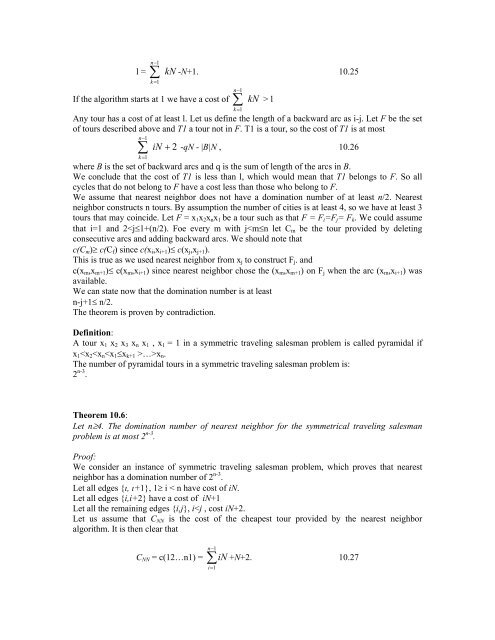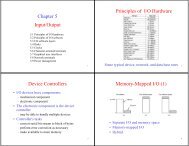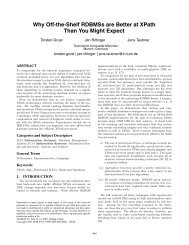Chapter 10 The Traveling Salesman Problem
Chapter 10 The Traveling Salesman Problem
Chapter 10 The Traveling Salesman Problem
Create successful ePaper yourself
Turn your PDF publications into a flip-book with our unique Google optimized e-Paper software.
n−1<br />
l = ∑ -N+1. <strong>10</strong>.25<br />
kN<br />
k = 1<br />
n<br />
∑<br />
k<br />
−1<br />
= 1<br />
If the algorithm starts at 1 we have a cost of kN > l<br />
Any tour has a cost of at least l. Let us define the length of a backward arc as i-j. Let F be the set<br />
of tours described above and T1 a tour not in F. T1 is a tour, so the cost of T1 is at most<br />
1<br />
∑<br />
1<br />
− n<br />
k =<br />
iN + 2 -qN - |B|N , <strong>10</strong>.26<br />
where B is the set of backward arcs and q is the sum of length of the arcs in B.<br />
We conclude that the cost of T1 is less than l, which would mean that T1 belongs to F. So all<br />
cycles that do not belong to F have a cost less than those who belong to F.<br />
We assume that nearest neighbor does not have a domination number of at least n/2. Nearest<br />
neighbor constructs n tours. By assumption the number of cities is at least 4, so we have at least 3<br />
tours that may coincide. Let F = x1x2xnx1 be a tour such as that F = Fi=Fj= Fk. We could assume<br />
that i=1 and 2






